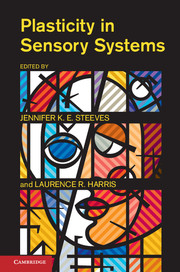1 - Plasticity in Sensory Systems
Published online by Cambridge University Press: 05 January 2013
Summary
Over the past ten or so years, brain plasticity has become an extremely hot scientific trend and a huge commercial enterprise. From the parent who wants to give his or her newborn an enriched environment to promote superior brain growth to the aging adult who wants to stave off Alzheimer's disease, exercising, enriching, and training the brain has become a multimillion-dollar industry. Hundreds of brain promotion companies have sprouted up, such as The Baby Einstein Company, LLC, and hundreds of new books are published each year on brain enrichment. “Brain health,” “brain training,” and “brain fitness” are terms that are bandied about in the advertising world, suggestive of the possibility of improving and prolonging intellectual health. However, this “brain improvement” commercialism, although occasionally overstated, is not without some foundation in hard science: the discovery of brain plasticity.
The roots of the concept of “brain plasticity” can be traced toWilliam James's seminal work, The Principles of Psychology (1890), in which he clearly understood that behavior, habits, or instincts are governed by certain physiological limitations. He states, “Plasticity, … in the wide sense of the word, means the possession of a structure weak enough to yield to an influence, but strong enough not to yield all at once.… Organic matter, especially nervous tissue, seems endowed with a very extraordinary degree of plasticity of this sort; so that we may without hesitation lay down as our first proposition the following, that the phenomena of habit in living beings are due to the plasticity of the organic materials of which their bodies are composed” (p. 106).
- Type
- Chapter
- Information
- Plasticity in Sensory Systems , pp. 1 - 6Publisher: Cambridge University PressPrint publication year: 2012



